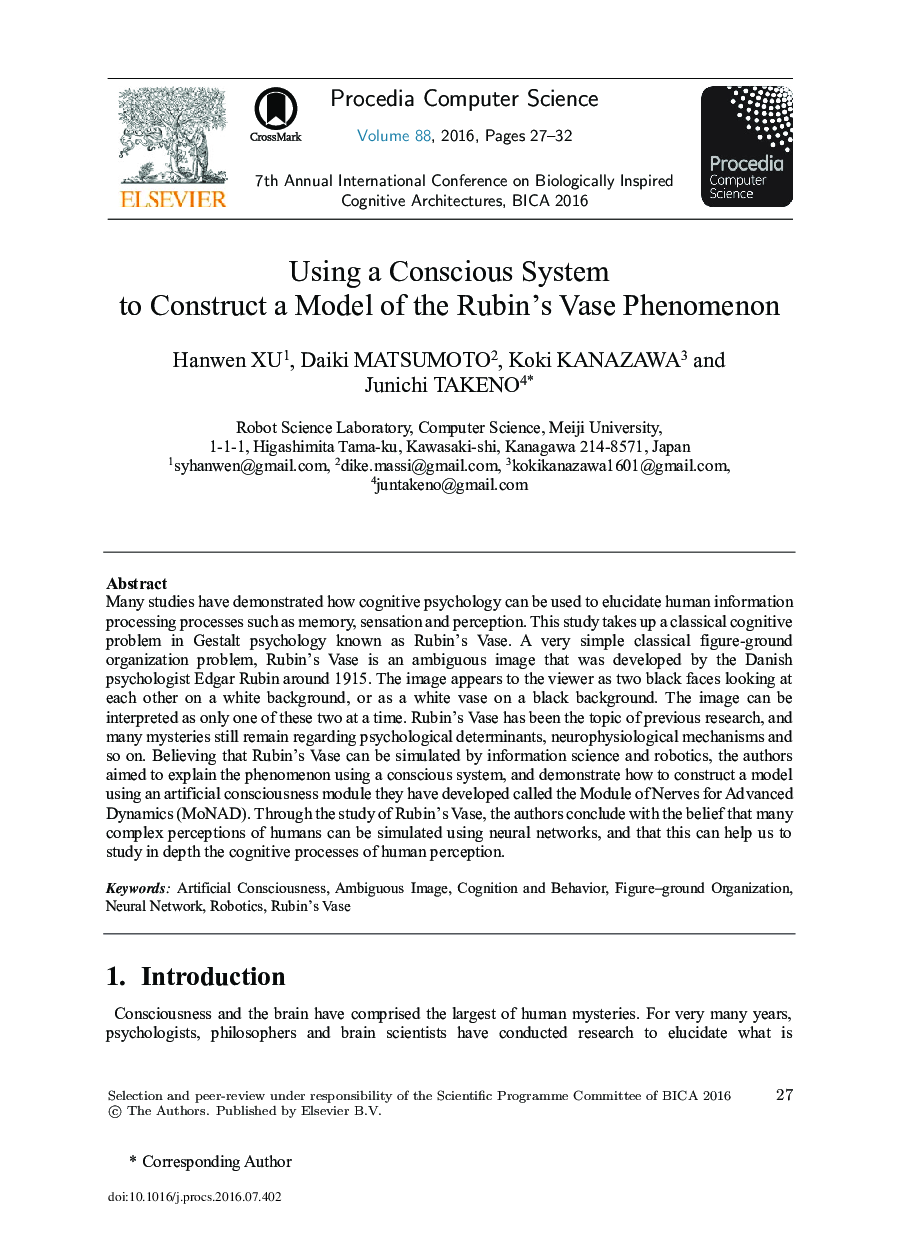| Article ID | Journal | Published Year | Pages | File Type |
|---|---|---|---|---|
| 4962241 | Procedia Computer Science | 2016 | 6 Pages |
Many studies have demonstrated how cognitive psychology can be used to elucidate human information processing processes such as memory, sensation and perception. This study takes up a classical cognitive problem in Gestalt psychology known as Rubin's Vase. A very simple classical figure-ground organization problem, Rubin's Vase is an ambiguous image that was developed by the Danish psychologist Edgar Rubin around 1915. The image appears to the viewer as two black faces looking at each other on a white background, or as a white vase on a black background. The image can be interpreted as only one of these two at a time. Rubin's Vase has been the topic of previous research, and many mysteries still remain regarding psychological determinants, neurophysiological mechanisms and so on. Believing that Rubin's Vase can be simulated by information science and robotics, the authors aimed to explain the phenomenon using a conscious system, and demonstrate how to construct a model using an artificial consciousness module they have developed called the Module of Nerves for Advanced Dynamics (MoNAD). Through the study of Rubin's Vase, the authors conclude with the belief that many complex perceptions of humans can be simulated using neural networks, and that this can help us to study in depth the cognitive processes of human perception.
